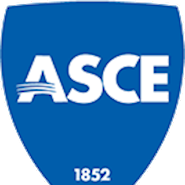ASCE has honored Kyle M. Rollins, Ph.D., M.ASCE, with the 2024 H. Bolton Seed Medal for his creative, unique, and implementable contributions to geotechnical earthquake engineering, which include but are not limited to liquefaction testing and analysis and ground and pile response analysis.
Rollins is a leading figure in liquefaction assessment and testing. He and his colleagues pioneered the development of blast-induced liquefaction techniques for full-scale field testing. This technique was first used to develop p-y curves for piles and shafts in liquefied soils at Treasure Island and then the Cooper River Bridge in Charleston, South Carolina. These p-y models are now built into commonly used computer codes such as LPILE and GROUP.
Traditionally, liquefaction tests required centrifuges or shake tables and were usually conducted in the lab with small- or reduced-scale models due to the constraint of equipment capacity. In addition, real-world soil strata cannot be well represented in the lab. The blast-induced liquefaction has opened a door for full-scale liquefaction tests in the field, which can best mimic the liquefaction process to study the pore water accumulation, dissipation, and soil particle movement. Rollins has developed a practice protocol for this technique, making it an indispensable tool in the liquefaction research community.
Rollins is among the few researchers who have comprehensively researched seismic-induced lateral load on piles and bridge abutments. His work here includes many iconic projects, such as Statnamic lateral load tests on pile groups investigating damping coefficients and passive force on the abutment during earthquake shaking. Rollins’ contribution has lifted him to the very top group of researchers on geotechnical earthquake engineering.
The H. Bolton Seed Medal recognizes outstanding contributions to teaching, research, and/or practice in geotechnical engineering.



